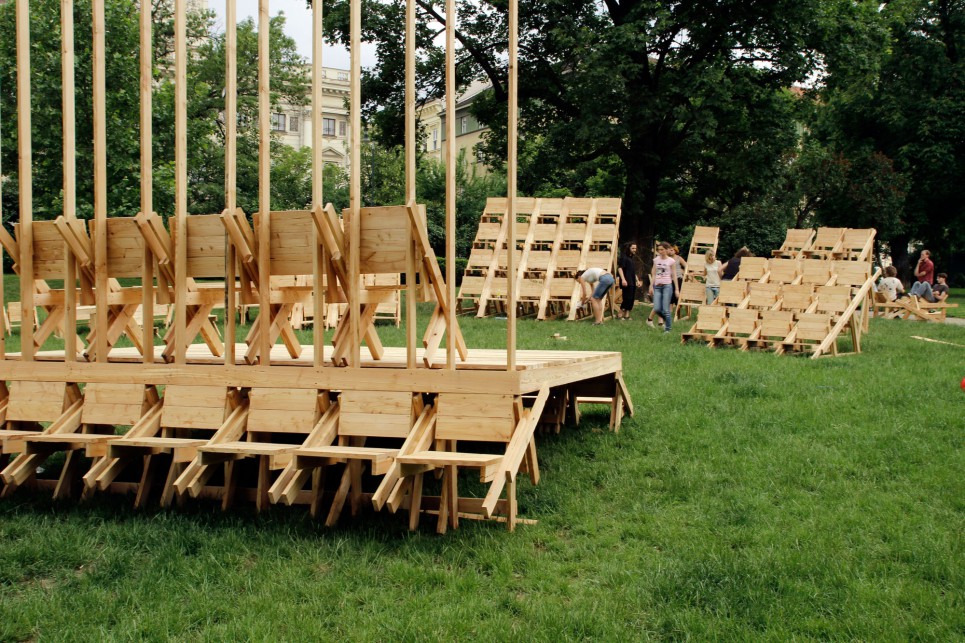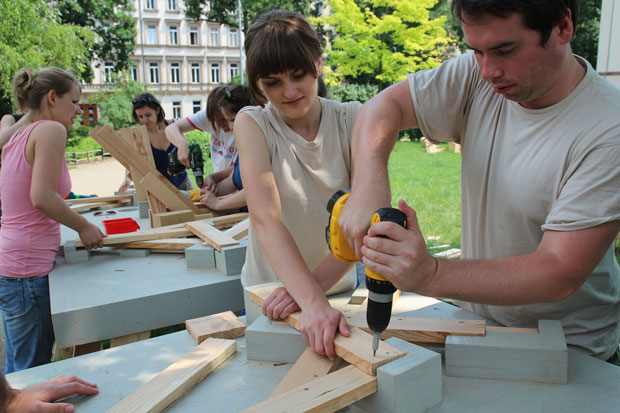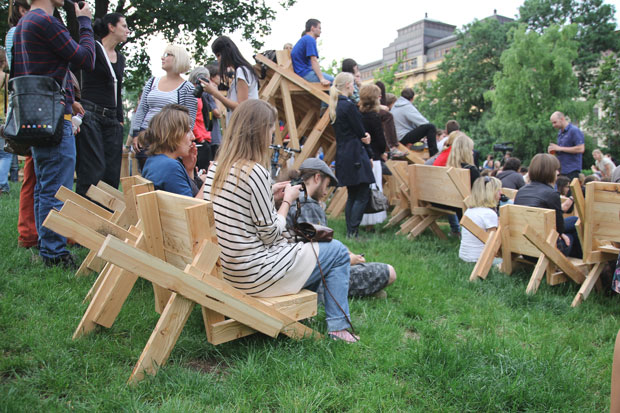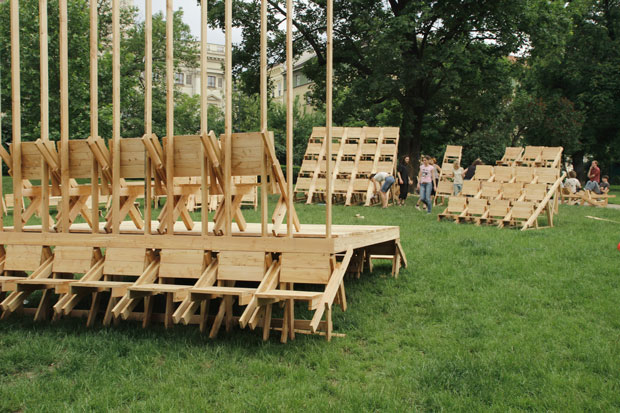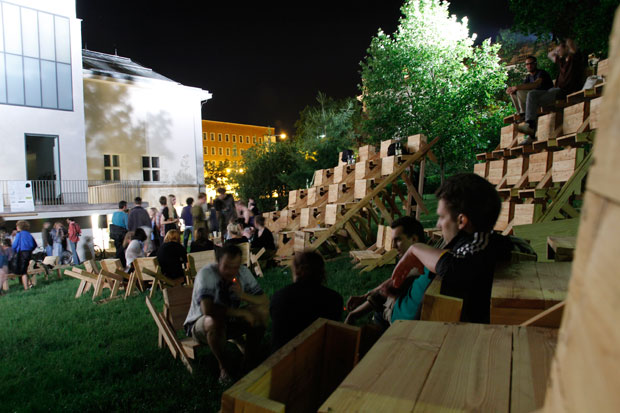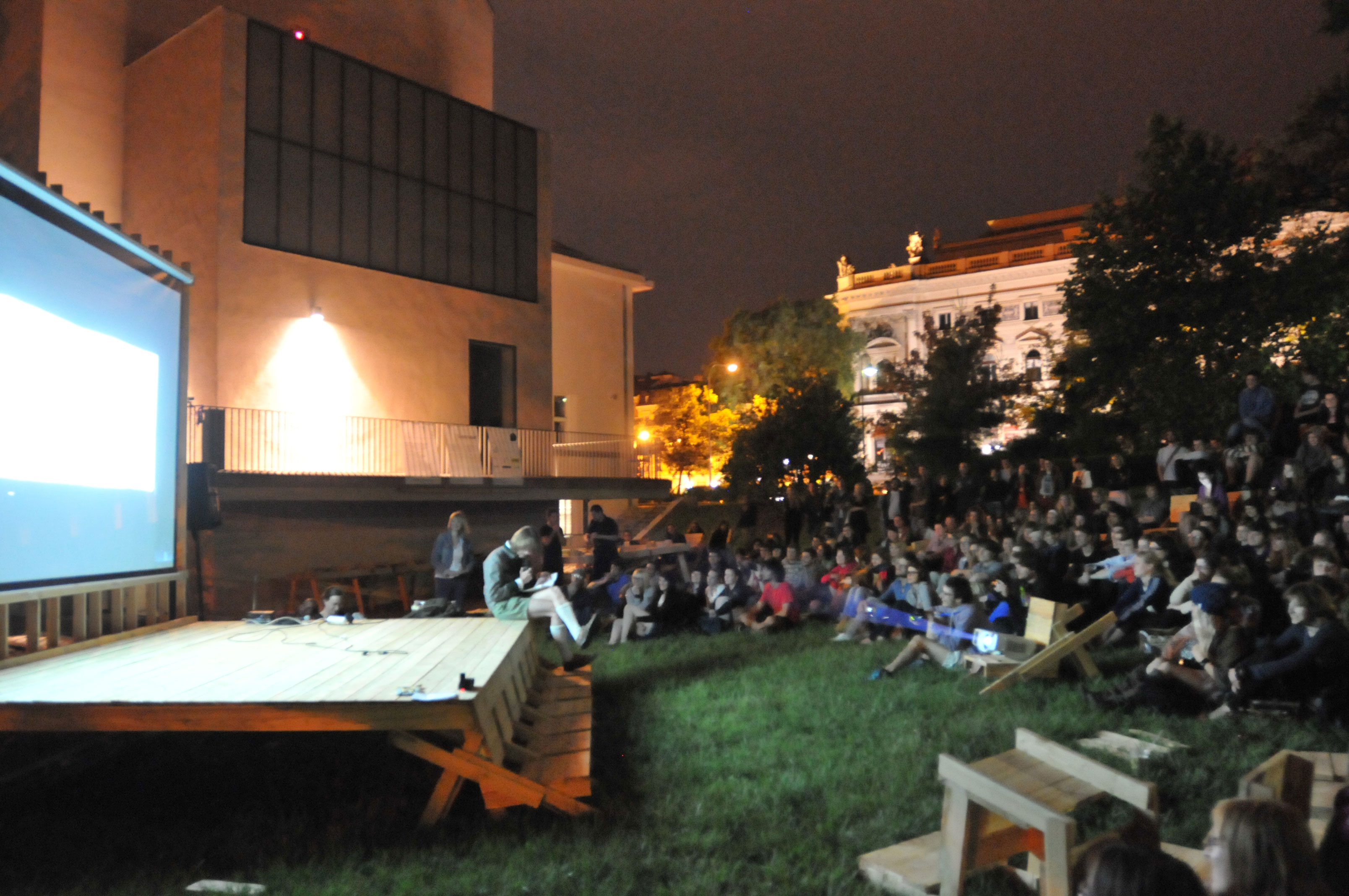THE GENERATOR // BRNO PUBLIC STAGE
committed by The Brno House of Arts
in collaboration with Students from the University of Applied Science and Arts Dortmund (Judith Kückmann, Alicja Jelen, Christina Querfurt, Sandra Swienty, Mila Schachnowitsch, Yiyi Xiang, Stephanie Fähnrich, Lucie Drouin-Meslé, Peter Gerken, Friederike Sommer, Magdalena Semrau, Aleksandra Gnielka, Lena Wesholowski)
and
Team Brno: Nicol Gale, Rasto Udžan and Students of the Faculty of architecture BUT / Brno University of technology (Ivana Lelkes, Marek Bulej, Kateřina Kunzová, Jiří Tomíček, Radek Pasterný, Aneta Janíčková, Nela Lišková, Petra Lukášová, Karel Adamec, Marta Bímová, Iveta Kolláriková, Aleš Javůrek, Dominika Petrů, Michael Gabriel, Adéla Varmužová, Klára Vejvodová, Roman Ženatý)
Partners: Czech-German Fund for the Future / Robert Bosch Stiftung / International Visegrad Fund / Embassy of Germany in Prague / Faculty of architecture BUT/Brno University of technology / DŘEVOPODNIK HAUSNER s.r.o. / Wombat, s.r.o. / The City of Brno / 4AM/Fórum pro architekturu a média /ARS PUBLICA
In Brno raumlabor built a Public Stage together with Students from the University of Applied Science and Arts Dortmund and the Faculty of architecture BUT / Brno University of technology
One of raumlabor’s motivations is to engender alternative practices within the city, fostered through cooperation and self-empowerment. They explore what remains of collective ideals and ways to overcome today’s harsh conditions of economic competition. Establishing temporary communities is one tool to creating a surrogate notion of a city beyond the capitalist logic of use-value and profitability.
foto (c) raumlaborberlin

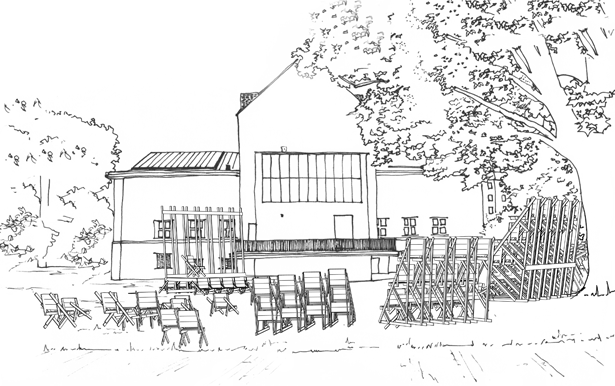
foto (c) Rasto Udžan
fotos (c) raumlaborberlin
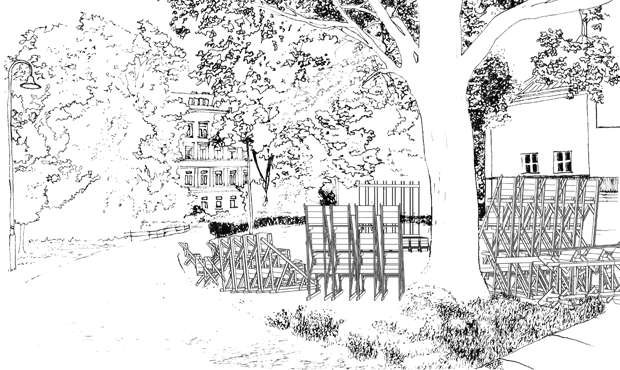
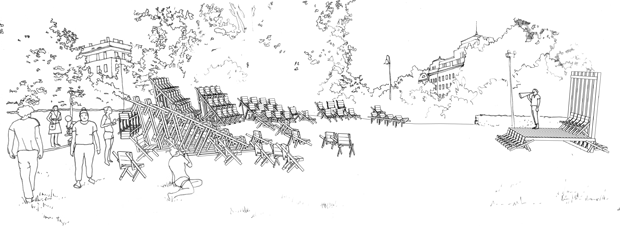
foto (c) raumlaborberlin
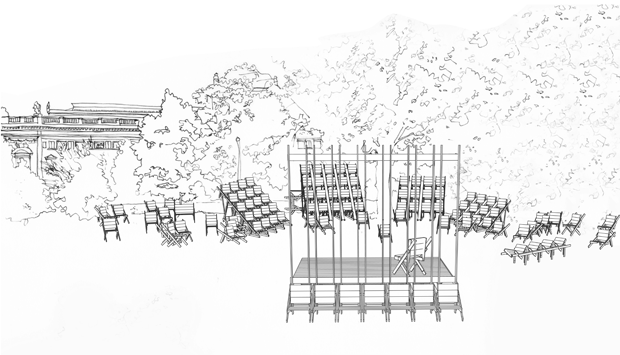
foto (c) raumlaborberlin
foto (c) raumlaborberlin
foto (c) raumlaborberlin
THE GENERATOR is an experimental building laboratory for instant, participatory building practices in public space. Central issues of the research include: construction principles, new geometries for furniture and lightweight construction buildings, as well as new use possiblities and multiple programs for people to meet and interact in public.
DER GENERATOR ist ein experimentelles Baulabor für eine plötzliche, partizipatorische Entwurfs- und Baupraxis im öffentlichen Raum. Das zentrale Thema dieser Versuchsanordnung sind Konstruktionsprinzipien, neue Geometrien für Alltagsmöbel und Leichtbaukonstruktionen ebenso wie neue Nutzungsformen und vielfältige Programme, die die Öffentlichkeit anregen, gemeinsam eine Vision zu verwirklichen, zu interagieren, Erfahrung und Expertise auszutauschen. Der Generator erforscht Möglichkeiten des gemeinsamen Handelns im öffentlichen Raum.
The Generator consists of two components: hardware and software. The hardware is a workstation designed for mobility. A set of several flight cases can be assembled as two workbenches. They contain all the necessary tools for eight people to work on site using simple wood slats and plywood as building materials.
Der Generator besteht aus zwei Komponenten, der Hardware und der Software. Die Hardware ist eine mobile Werkbank, die alle notwendigen Werkzeuge für die zeitgleiche Arbeit für bis zu 10 Leuten beinhaltet sowie eine ausklappbare Werkbank. Die Werkzeuge dienen der Bearbeitung von einfachen Rauspundbrettern, Sperrholz und Schrauben. Der Generator ist leicht beweglich und kann so innerhalb kürzester Zeit zu einer kleinen Werkstatt aufgebaut werden.
The software is a set of construction plans and instructions for modules, which are developed for easy assembly. The construction methods will be constantly tested and improved. The modules can be assembled into chairs, tables, and shelves, as well as walls and shelters. The participants can transform the modules accidentally or intentionally. A process of learning by doing. The team will record and reuse all possible mutations of the system and incorporate them into a growing structure.
Die Software besteht aus einem Set von Plänen, Bauanleitungen und gegebenenfalls Schablonen für den schnell erlernbaren Bau von Objekt- und Raummodulen. Die Module können zu Stühlen, Bänken, Tischen etc. kombiniert werden aber auch zu Wänden und kleinen Raummodulen. Beim Bauen können die TeilnehmerInnen die Software ändern, weiterentwickeln, perfektionieren, erneuern – absichtlich oder auch zufällig. Ein learning-by-doing Prozess.
